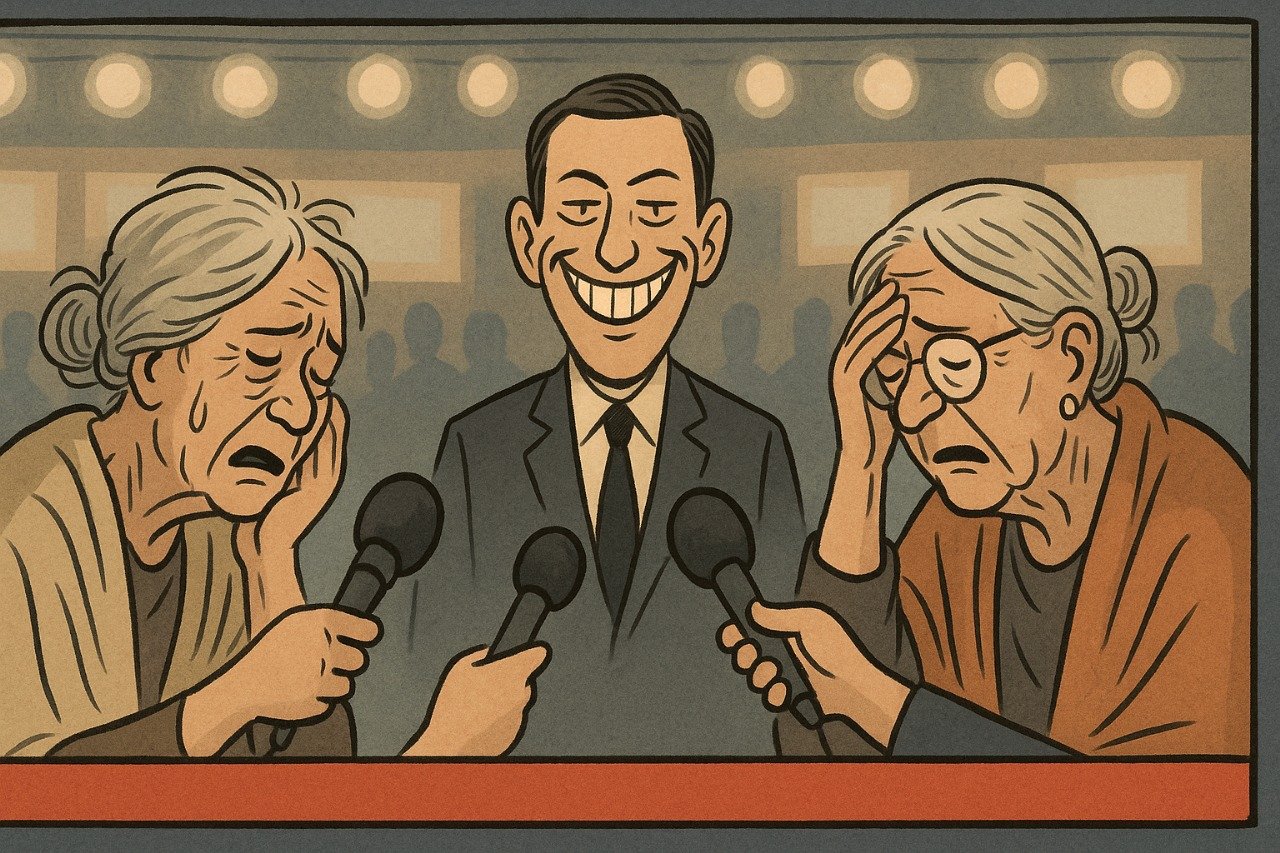The death of 28-year-old Raja Raghuvanshi, a newlywed from Indore, during a trek in Meghalaya, has shaken the nation. Just 12 days into his marriage with Sonam, he went missing on May 23. Days later, his body was discovered in a gorge. Investigations revealed a harrowing plot: Sonam, allegedly in a relationship with a family employee, was accused of orchestrating Raja’s murder with three hired men. She later surrendered, prompting widespread coverage and commentary.
The story, steeped in betrayal, intrigue, and violence, immediately captured public attention. However, it was not just the crime but the nature of the media coverage that turned the case into a national flashpoint.
Journalism or Voyeurism?
The newsrooms across India jumped on the story with fervor. What followed were emotionally charged broadcasts, graphic recreations, and incessant coverage that critics say blurred the line between journalism and reality TV. Particularly contentious was the broadcasting of orchestrated confrontations between grieving family members. In one widely circulated segment, reporters facilitated a tense, emotionally raw exchange between Raja’s mother, Uma Raghuvanshi, and Sonam’s mother, Sangeeta. Cameras rolled as the two women—both visibly distraught—were placed face-to-face under glaring lights, with microphones pushed toward them to capture every tear, word, and tremor. Witnesses said the families had been reluctant to interact but were pressured by the media crew to “express” themselves for the sake of the segment. The resulting footage turned grief into a form of staged drama.
Social media platforms erupted in outrage, condemning what many described as the commodification of trauma. Critics accused the media of manipulating private grief into theatrical content for television ratings. A particularly disturbing video showed reporters refusing to leave Uma Raghuvanshi’s home as she pleaded for space to mourn, further intensifying public backlash over journalistic ethics.
A Systemic Malaise in Crime Reporting
Observers say this is not an isolated incident. Sensationalist coverage has long been a mainstay of Indian television news, especially in crime cases. The coverage of Raghuvanshi’s death included dramatized music, speculative theories, and even bizarre claims — all in the name of capturing audience attention.
FCRF x CERT-In Roll Out National Cyber Crisis Management Course to Prepare India’s Digital Defenders
Academics and media critics have called out the systemic flaws that allow such reporting to flourish unchecked. The lack of regulatory checks, combined with the competitive pressures of the television industry, creates an environment where empathy often takes a backseat to engagement.
“The race for viewership has turned newsrooms into entertainment factories,” noted a professor of media studies.
Calls for Media Reform Grow Louder
As outrage mounted, the Raghuvanshi family urged journalists to respect their grief. Raja’s brother publicly apologized to the Meghalaya government, lamenting the negative attention brought upon the state. Sonam’s own family members expressed shame over both the crime and its broadcast aftermath.
Watchdog bodies have since faced mounting calls to institute reform — including proposals for mandatory journalist sensitivity training and stricter ethical guidelines for crime reporting. While discussions have begun, enforcement remains a daunting challenge in India’s fractured and largely self-regulated media ecosystem.
A Nation Reflects
With five accused now in custody and the investigation ongoing, India finds itself once again reckoning with the darker side of its media culture. For critics, the real tragedy isn’t just the murder—it’s how quickly human suffering is packaged for public consumption. Families still in mourning are left under the harsh spotlight, their private pain transformed into televised spectacle.
The question remains: Can Indian journalism rediscover its ethical core, or has the pursuit of ratings irreparably distorted its purpose?


